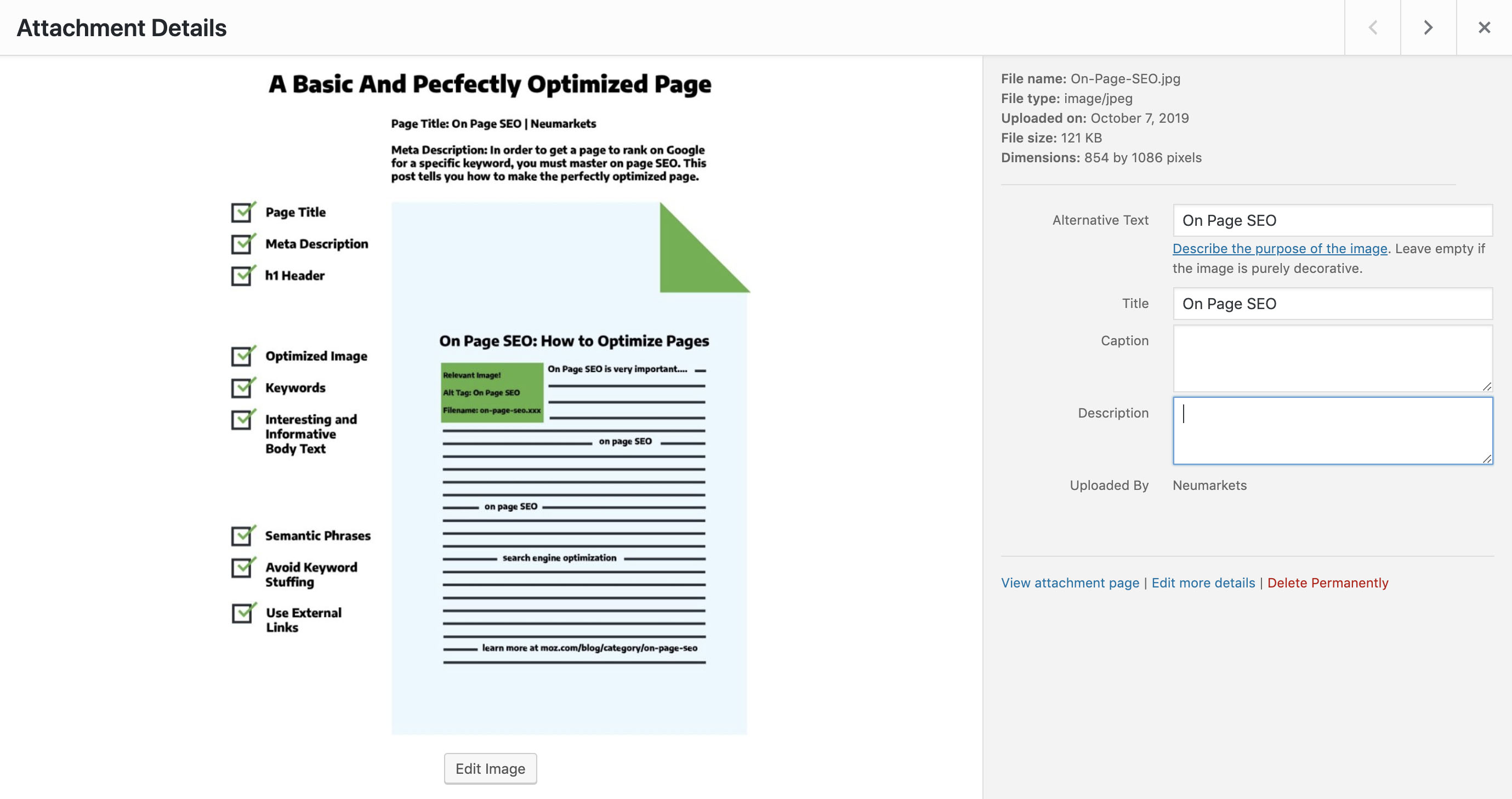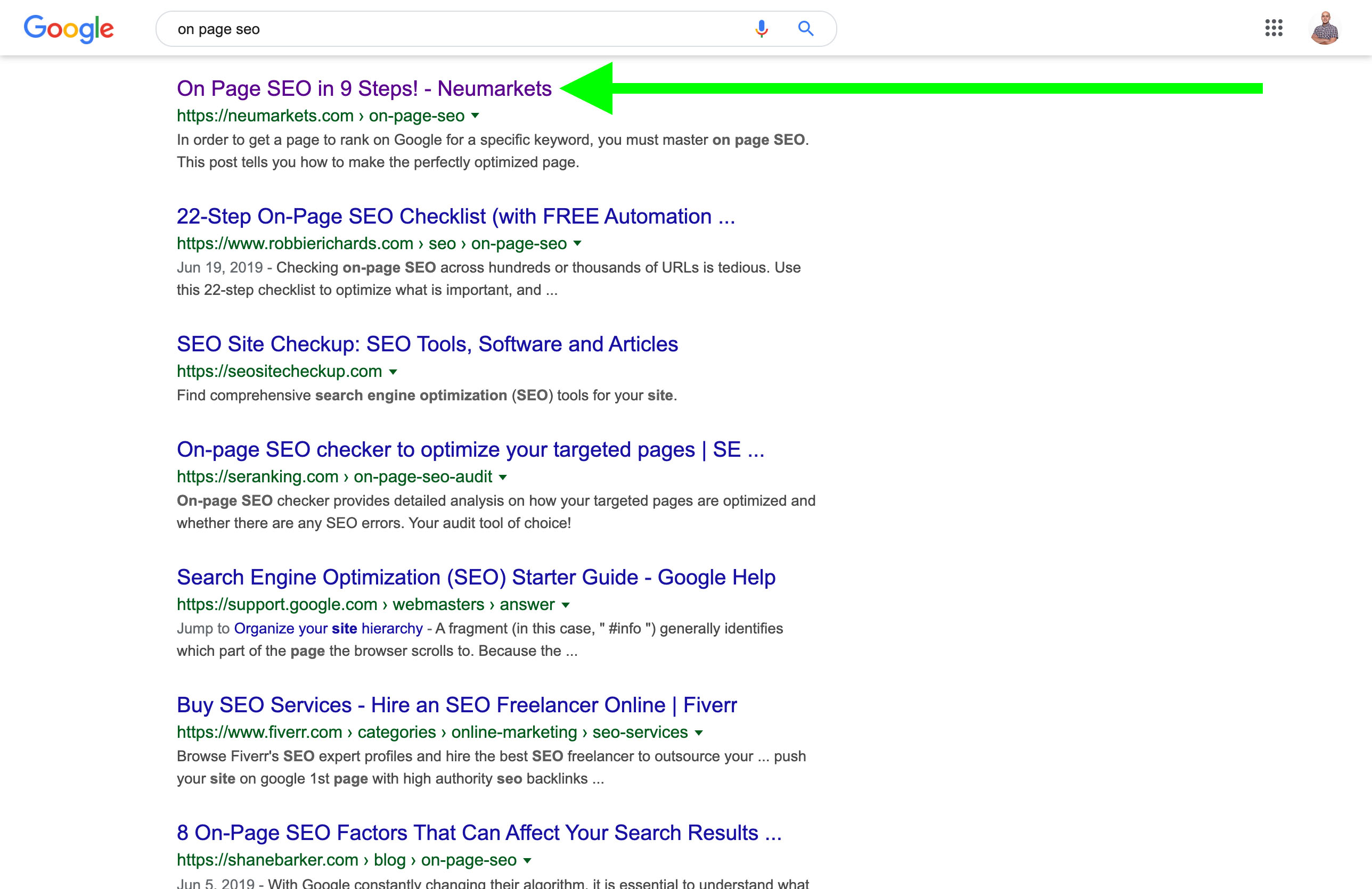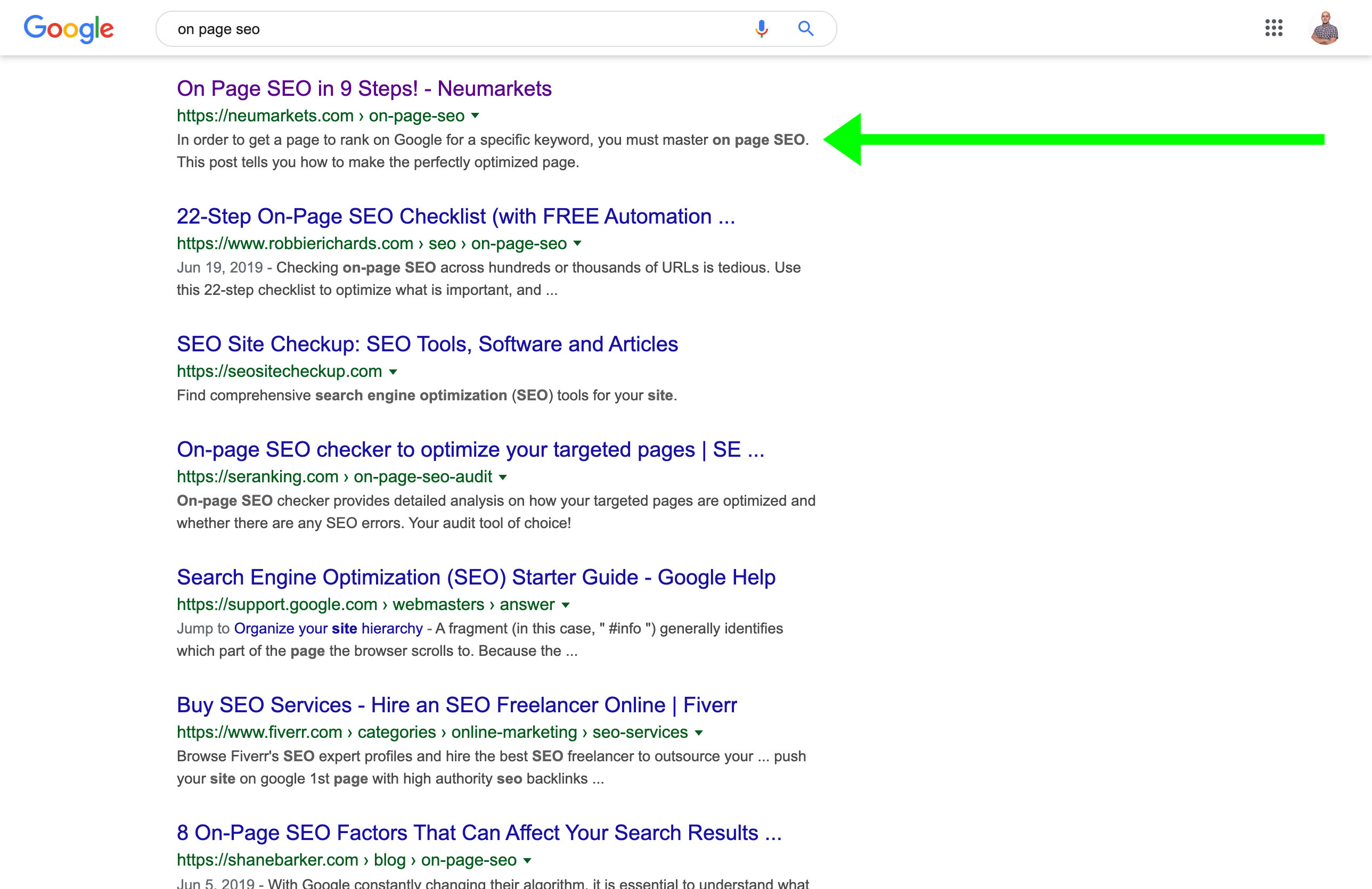On-Page SEO in 9 Steps!
To get a page to rank on Google for a specific keyword, you must master two components on-page SEO and off-page link building. On-page SEO entails optimizing the structure of a page in a way that makes it easier for search bots like Google to find and associate the page with your desired keyword(s).
When it comes to on-page SEO, some factors are more important than others. In this post, we will discuss the most critical factors, right down to the little tweaks that will set your page apart from the competition.
This post is not for those who feel like their content is a work of art and should be written only for their pleasure. This process is for those who believe that content should be written for both your audience and the search engines.
It’s better to target a different keyword group for each page to avoid ranking cannibalization.
For a visual overview of what is required, check out the below:
On Page SEO: The Process
Make your site accessible to search engines.
If a search engine cannot find your site, you can optimize all you want, but it will never appear. If you’re using WordPress, you can check that your website is crawlable by logging into the WordPress portal and selecting Privacy under the Settings tab. When you are in the privacy settings, make sure the ‘Allow search engines to index this site’ option is selected under the Site Visibility heading.
To confirm that your website is crawlable, whether you are using WordPress or not is to log into Google Search Console. If you see clicks on the Overview > Performance chart, then you’re good to go!
Body
It’s essential to try to include your keywords into the body of your document at least four times. If you need to rearrange your keywords to make them fit into natural language for better flow, please do not hesitate to do so. Google is becoming more contextual, so don’t worry about using an exact keyword string for all instances. Make sure your exact keyword appears at least one of those four times.
To clarify, we are not saying the more keywords, the better. If you squeeze your keyword into your document 42 times, it will not only hurt the readability of the page. It will hurt your rankings as well. A simple rule to follow here is to try to keep everything you write online written for humans but tweaked for search engines.
Lastly, you need to invest in your content and commit to at the very least 500 words. Anything less than this is considered light and to hold no value whatsoever. Don’t strive for the minimum. Your goal should be to write informative articles, which usually requires 1500+ words. Don’t stretch out your blog posts; get your point across as concisely as you can.
Images
If you have images, make sure your keywords are in the alt tag of the photo. Also, name the image to match that of your keywords, for example, keyword.jpg.

Ensure your blog post has an image because it’ll help you rank. And, if it is related to your content, it can dramatically improve the reader’s ability to recall the information.
Page title
The page title is what shows up in the tab of whatever web browser you are using. If you hover over the tab, it should display the full page title.
Ideally, you should have your page title set to “Exact Keywords | Your Brand Name.” It’s best practice to use your exact keywords and use them at the front of the title text such as:
Digital Marketing Agency | Neumarkets
Be careful, because your page title appears in the search engine results, so you want to keep it easy to read and enticing people to click through to your website. Getting the top spot for any keyword is pointless if no one clicks on the result.

Avoid setting multiple page titles. Various page titles are usually a result of incorrect code by the developer. Having two page-titles confuses search engines because they cannot decide what the actual title of your page is.
An easy way to determine how many page title elements you have for any given page on your site is to view the source code for your page. Here is how to do it in Chrome.
Right-click on the page (or two-finger click on a Mac) then click view source. You should only find one title tag in the head section of the document.
Meta Description
A meta description is what appears after the title of your page in the search results.

A proper meta description can increase the search traffic of your site. It’s also essential for your keyword to be present in your meta description and that the description does not exceed 156 characters in length.
Just like the page title, there should only be one of these. Use the same view source technique as you used for the page title to confirm that you only have one meta description.
A quick note about using meta keywords: Don’t. They will hurt you in the rankings.
H1 Tag
The h1 tag is different from the title tags we discussed previously. It is imperative that the keywords be in the h1 element as well and just like the title, putting your keywords at the front of the tagged text is ideal. If you are using WordPress, whatever you use in your h1 tag will default as your page title. If you need to differentiate the two, download an SEO plugin that will allow you to write custom page titles and meta descriptions.
Try to use the keyword only once in the h1 tag, twice if it is necessary but never three times. Some SEO experts argue that your page title and h1 mustn’t be precisely the same; however, I haven’t bought into that school of thought.
URL
It would be best if you tried to have your target keywords in the slug of your URL, for example,
https://www.example.com/keyword (where the keyword is the slug) or even better https://www.keywordvariation.com/keyword
A content management system such as WordPress can automatically set your h1 title text as the slug. It is easy to change these; click on the slug field and type in what you want.
It is best practice to use standard characters in your URLs, meaning letters, numbers, and dashes (-) in place of spaces.
Last but not least, your URL length also needs to be considered. Try to keep your URLs to 76 characters in length or less. Google will often truncate the URL after 76 characters – meaning, your keyword may not get picked up in the mess of characters.
Make sure to have as few subfolders in your URL as possible. Removing subfolders is a more difficult task and may require your developer to jump in, but a URL such as xyz.com/keyword is much better than xyz.com/blog/year/month/keyword.
PRO TIP:
If, after going this blog post, you just realized that all of your slugs are nonsensical, you should go ahead and correct this (unless, of course, you have managed to rank well as is). If you do go ahead and change the URL slug, the proper process to follow would be to set up a 301 redirect from your old URL to your new optimized URL.
For example, you would 301 redirect; https://example.com/crazy_slug-that-doesnt_make-sense to https://example.com/keyword
Rel canonical
The easiest way to think of the rel canonical tag is to think of citing your sources in a bibliography. This tag is essentially the web-friendly way to give credit to the original page where your content was published.
If your content is entirely original, then set the rel canonical to the page you are publishing, which tells the search engines that you are the originator of the material.
WordPress Fans:
If you are wondering how to set up a rel canonical for original content to point back to your page – not to worry, WordPress takes care of it for you!
Please note that there is a difference between referencing content (don’t use the rel canonical tag) and blatantly copying the content (done using the reference tag).
From time to time, you may have instances where directly copying a page on another site is useful, such as re-posting a press release on multiple websites.
Linking
Linking internally within your site, and to other highly relevant sources on the web helps direct users to content they may find interesting. Providing more insight into a topic or confirming a source for credibility also helps your SEO!
However, like everything in the SEO game; do not link to internal or external content excessively, as this can be seen as manipulative.
When you do link to content within your site, be sure to include the keyword in your hyperlink, so it is clear where they are going. For example,
If you need SEO services for your organization, it just so happens that we’re experts!
I’m not sure if you noticed, but this page is 100% optimized for On-Page SEO. Click here for proof.
On-Page SEO Checklist
We created a Google Doc that you can copy the document and use it as much as you wish. Just go to File > Make A Copy and have your checklist. Please get it here.

Evan White
Director, Digital Marketing
Evan is a tech geek that has helped public companies, Fortune 500 enterprises, and SMB clients implement technical solutions to their marketing challenges.
He has a wide range of knowledge of website design and development, search engine optimization, and digital marketing. You'll often find him obsessing about the SEO of a page or the speed of a website. Read more of his blog posts here.
His bookmarks include links to tech blogs, The Economist and Formula 1 news. When not geeking out, you'll find Evan travelling or playing beach volleyball.